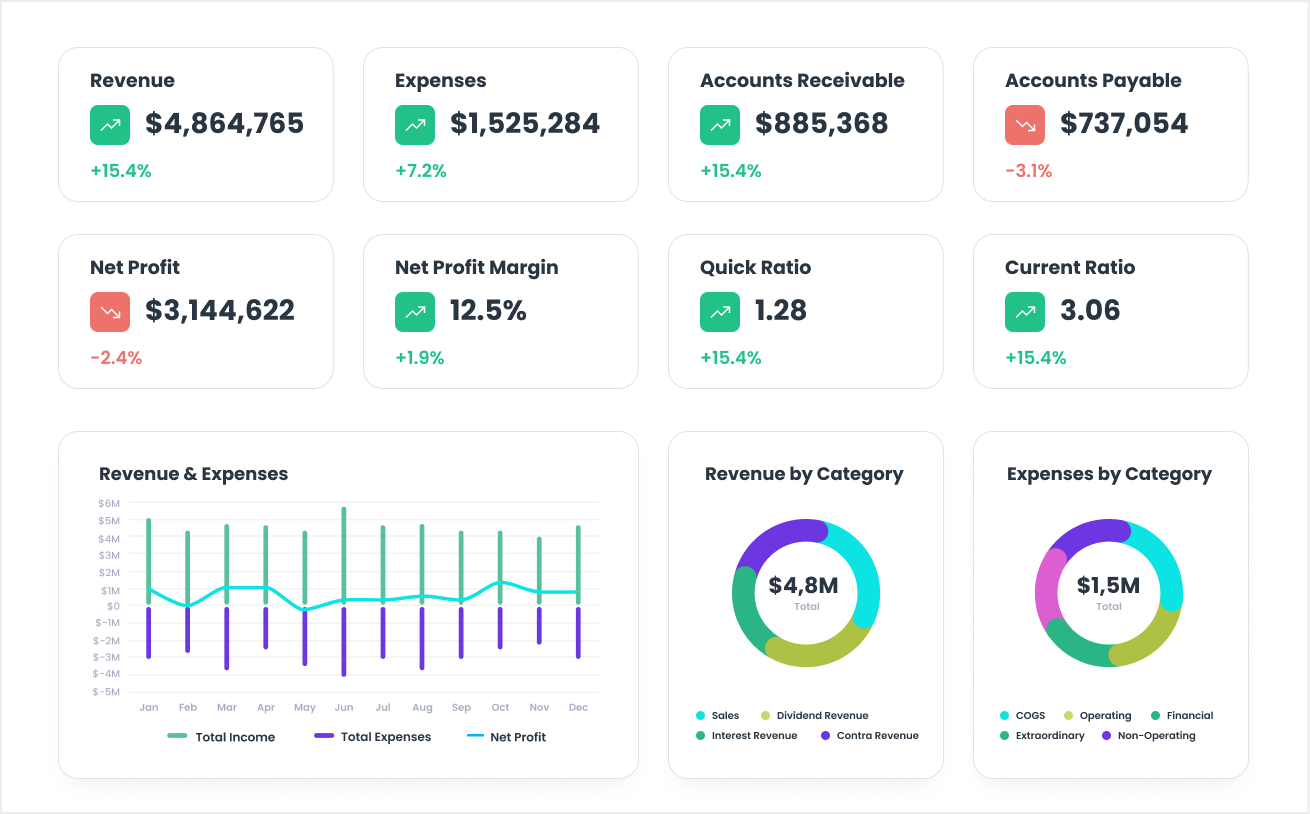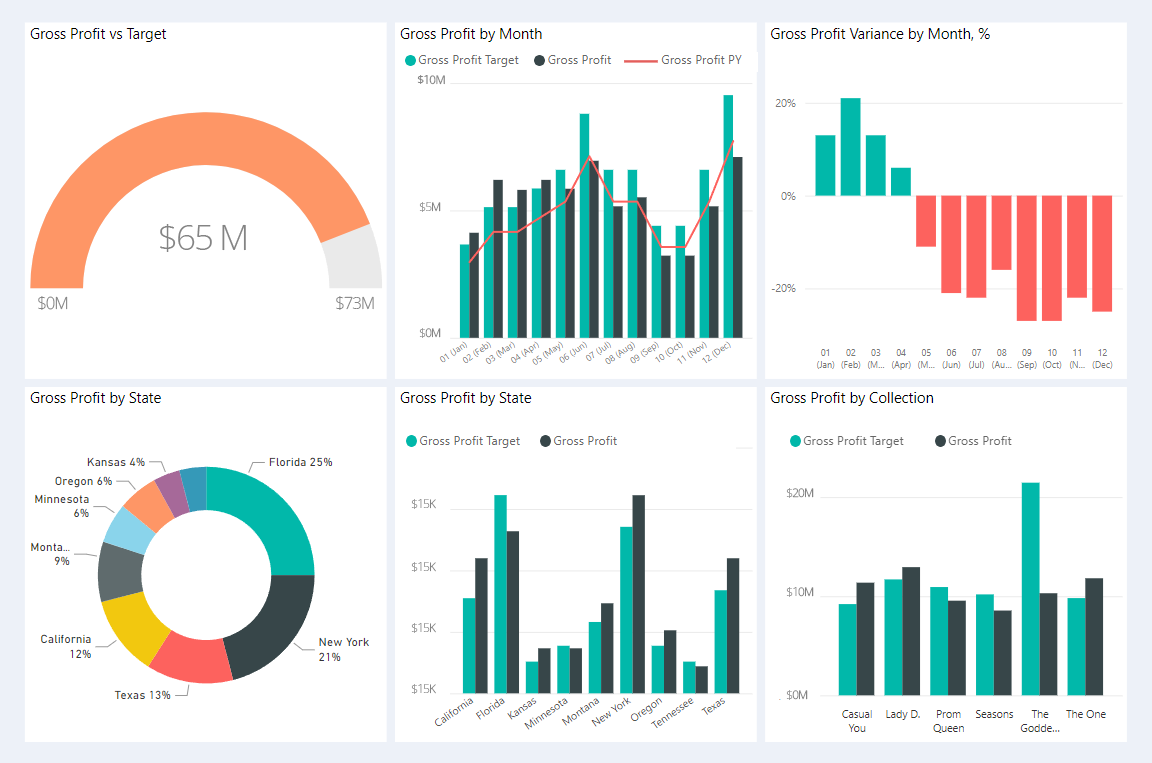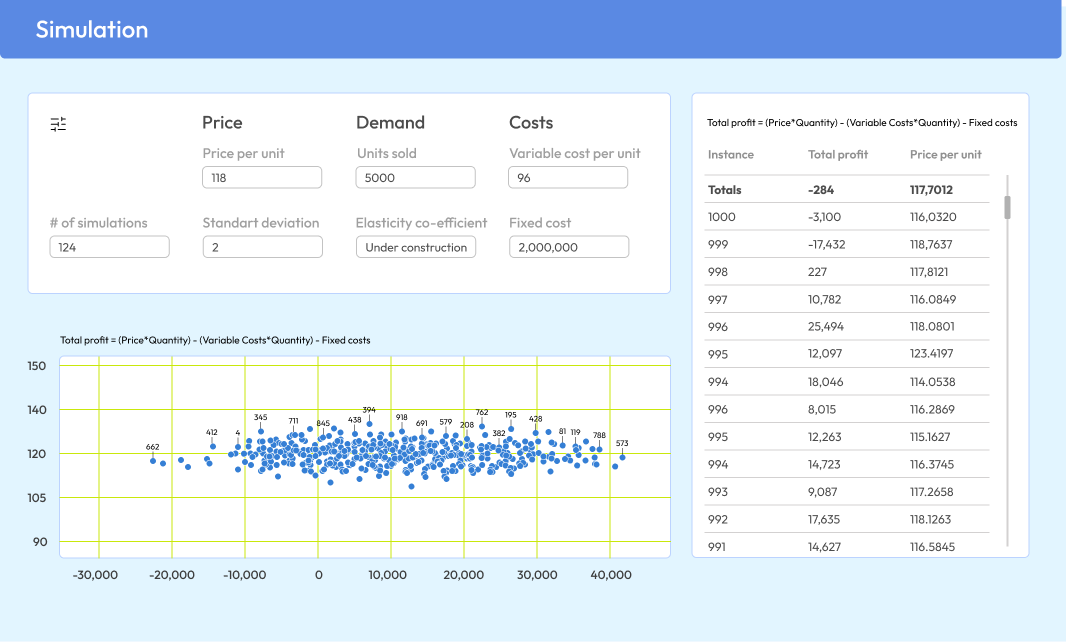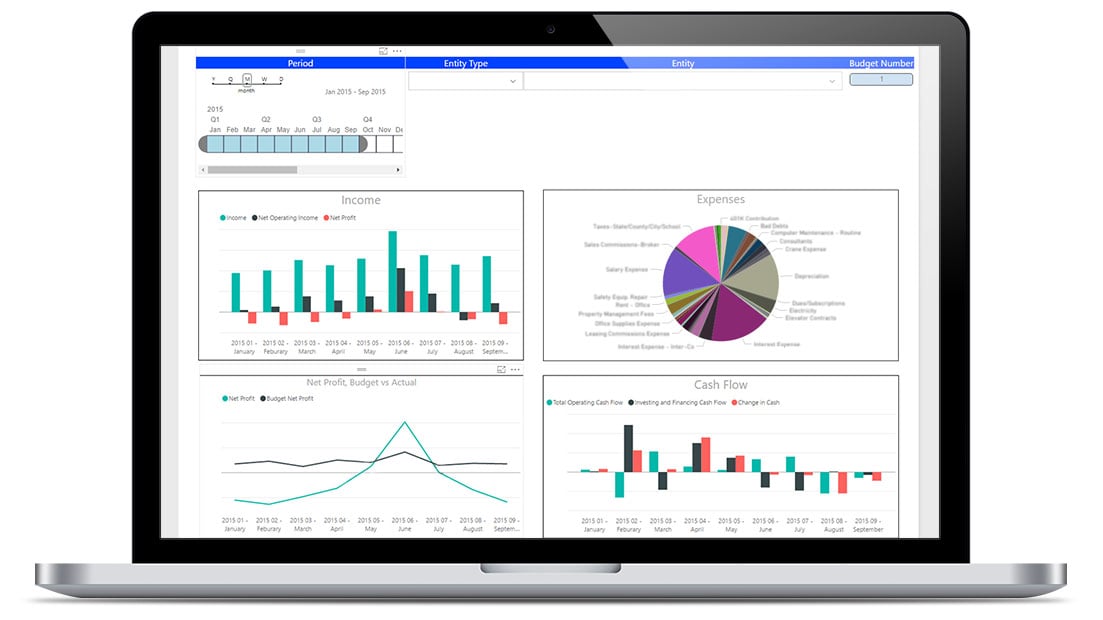Financial Data Analytics
Software Features, Costs, and ROI
With 36 years in data analytics, ScienceSoft builds custom analytics systems that help organizations get a 360-degree view of their financial performance and enable precise forecasting, informed risk management, and strategic budgeting.
Financial Data Analytics: the Essence
Financial analytics is the process of driving actionable insights from diverse financial data sources, such as sales, cash flow, and revenue, to refine business strategies and optimize decision-making processes. Custom financial analytics solutions enable companies to gain real-time insight into budget management, leverage machine learning for precise financial forecasting and process optimization, and build what-if scenarios for financial planning and risk mitigation.
- Implementation time: from 2–6 months.
- Implementation costs: $20,000–$600,000, depending on solution complexity and business scope. Use our free online calculator to get a ballpark estimate for your case.
- Integrations: ERP, accounting software, treasury software, pricing software, CRM.
- ROI: up to 120% with a payback period of 9 months.
Financial Analytics: Key Features
Below, ScienceSoft's experts list the financial analytics capabilities most requested by our clients.
Essential Integrations for a Financial Analytics Solution
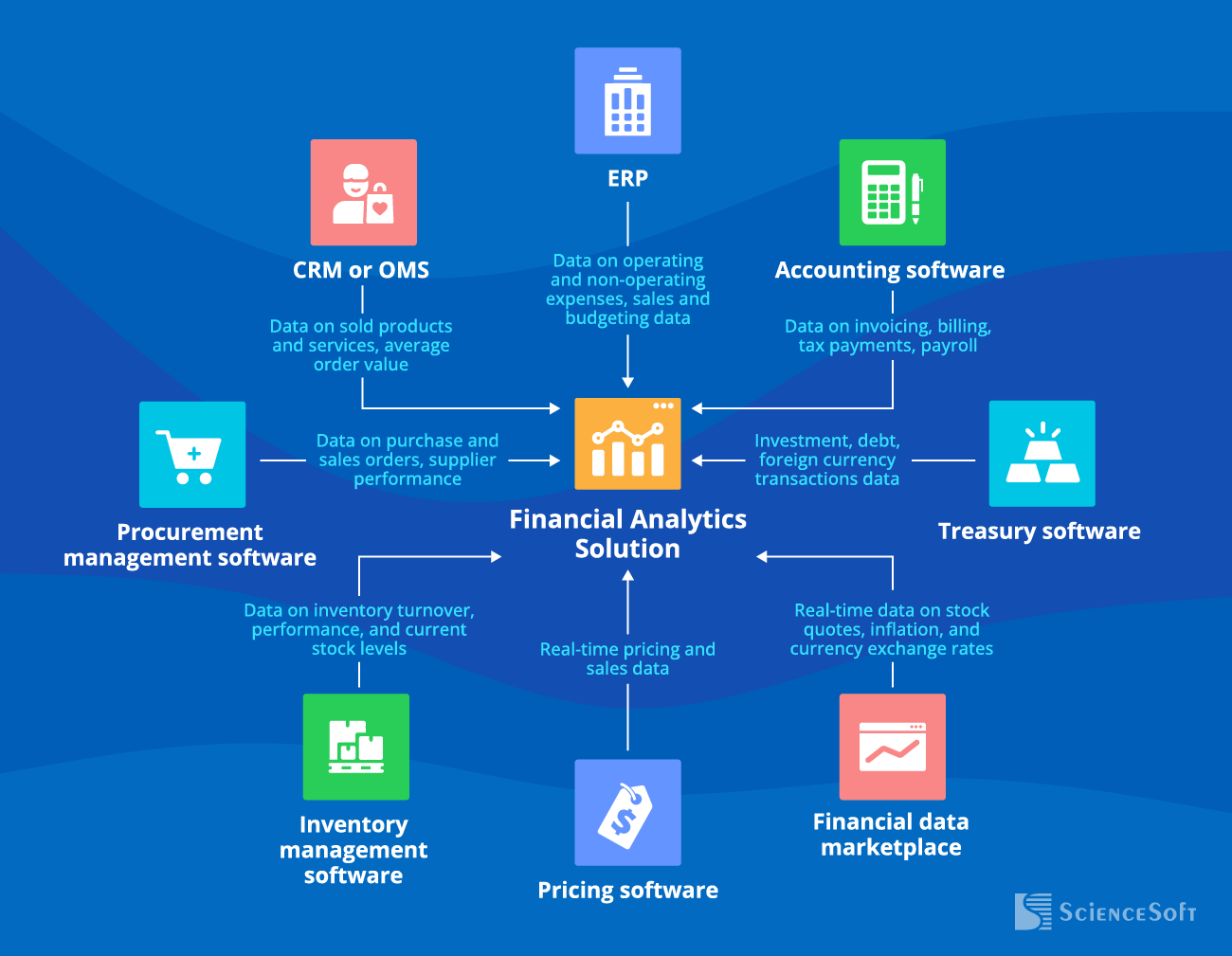
- To gain enterprise-wide visibility into financial performance and make informed decisions on its improvement.
- To accurately plan accounting procedures.
- To streamline compliance with tax and labor law regulations.
- To analyze investment performance and optimize investment management.
- To timely identify and mitigate financial risks.
Financial data marketplace
- To get an up-to-date view of financial markets and use this data for accurate financial modeling and forecasting.
- To enable historical and real-time analytics of prices and get pricing optimization suggestions.
CRM or OMS
- To analyze revenue and determine revenue-generating customer segments.
- To align the company's sales and marketing strategy with the financial plans.
- To identify cost optimization opportunities in inventory management.
- To forecast inventory-related costs.
- To assess the financial efficiency of suppliers.
- To enable informed procurement cost planning.
4 Steps to Building a Successful Financial Analytics System
Ensure smooth user adoption
Instead of rolling out a completely new and unfamiliar interface, build dashboards that are an optimal blend of old and new capabilities. E.g., implement cross tabs that display numerical data as both tables and charts. This way, the UI will be close to the familiar spreadsheet-like tools and help your conservative users gradually explore new features.
Enable compliant reporting on the system level
To avoid manual data preparation for financial reporting, ensure your analytics system complies with the required standards, such as GAAP, SEC, SOX, IFRS, ASC 606, and CMA. Make the layout of your financial reports fit the format of industry-specific forms (e.g., IFRS17 for insurance, Basel III for banking, Metro 2 for lending, 1099-MISC for healthcare). This way, the software output will be immediately ready for submission to authorities.
Customize the system to your industry
OOTB financial software is a good stepping stone for small businesses, but the larger your company becomes, the more complex and industry-specific its financial processes will be. Rather than being limited to basic analytics dashboards, manufacturers would benefit from insights into warranty policies and their impact on financial performance, while healthcare providers need insurance claims analysis to get a comprehensive view of their revenue.
Build role-specific dashboards
Tailor the dashboards’ UI to the types of insights required by different roles. For example, financial analysts need access to granular data views and ad hoc queries, but managers want to see their departments’ financial statistics and receive immediate alerts on important events (e.g., budget overruns). Finally, the C-suite would appreciate enterprise-wide financial performance dashboards that provide a bird’s eye view of the organization’s financial health.
Financial Analytics Simplified With a Power BI Chatbot
See how a Power BI chatbot providers users with financial analytics metrics based on natural language commands. The chatbot is trained on the company’s data and enables navigation to the relevant Power BI reports.
Costs and ROI of Financial Analytics Implementation
The cost of implementing a financial analytics solution may vary from $20,000 to $600,000, depending on software complexity. The essential cost factors include the number of integrations, data volume and diversity, the need for big data techs or ML/AI-powered capabilities.
On average, financial analytics solutions bring an ROI of about 120% with a payback period of 9 months. Major ROI drivers include higher productivity of finance teams and access to the most recent data.
$50,000–$100,000
Calculating and tracking major financial performance indicators (e.g., costs, revenue, cash flow) for SMEs with simple organizational structures and business models.
$200,000–$400,000
Calculating all required financial KPIs at a granular level (e.g., by subsidiary, region, department, product, customer group) for internationally distributed companies.
Advanced analytics capabilities:
+$50,000–$200,000
Root-cause analysis for financial performance indicators.
+$50,000–$150,000
Financial forecasts (statistical, ML-based), scenario modeling, and what-if analysis.
+$100,000–$200,000
AI-powered prescriptive analytics for financial planning and optimization.
Want to get a more precise figure?
Use our online calculator to describe your case and get a free cost estimate.
87% of Companies Report Tangible Business Value from Data and Analytics Investments
The 2024 Data and AI Leadership Executive Survey features feedback from 100+ Fortune 1000 companies that implemented data analytics. The report spans multiple industries, including healthcare (Mayo Clinic, Pfizer), BFSI (JP Morgan Chase, Wells Fargo), retail (Kroger, Procter & Gamble), manufacturing (Bridgestone America, General Motors), telecoms (Verizon), media and entertainment (Bloomberg, Facebook/Meta), education (University of Phoenix), and more.
Build Your Financial Data Analytics Solution with Professionals
ScienceSoft retains data analytics professionals with 12–27 years of experience and a team of corporate finance consultants. Our experts are ready to apply their knowledge and skills to build secure, scalable, and future-proof financial analytics software for your company.
About ScienceSoft
ScienceSoft is an IT consulting and software development company headquartered in McKinney, Texas. Since 1989, we've been helping organizations in 30+ domains build tailored analytics solutions that allow companies to benefit from streamlined financial management, informed decision-making, and increased business agility. Being ISO 9001 and ISO 27001-certified, we can guarantee top software quality and complete security of our clients' data.
